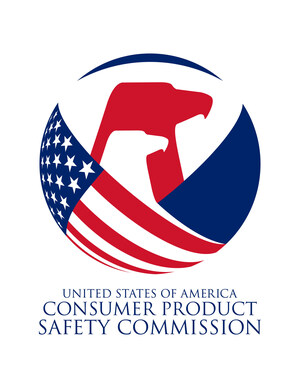WASHINGTON, Jan. 9, 2012 /PRNewswire-USNewswire/ -- Stepped up efforts by the U.S. Consumer Product Safety Commission (CPSC) to be more proactive have resulted in hundreds of millions of violative or dangerous units of products being stopped at U.S. ports and prevented from ever reaching the hands of consumers.
(Logo: http://photos.prnewswire.com/prnh/20030904/USCSCLOGO)
Working with U.S. Customs and Border Protection (CBP), CPSC staff screened thousands of consumer products that were either in violation of U.S. standards or otherwise unsafe and stopped them from ever reaching store shelves. The hard work of CPSC and CBP staff in 2010 and 2011 resulted in more than 6.5 million units of about 1,700 different children's products being stopped at our nation's ports, due to safety concerns or the failure to meet federal safety standards.
"Intercepting dangerous products as quickly and as early as possible, well before they make their way into the hands of children and other consumers, is consistent with our vision for CPSC to continue enhancing its protection of America's families," said Chairman Inez Tenenbaum.
The products stopped are wide-ranging. In addition to toys and other children's products, items targeted at import include mattresses, art materials, household chemicals, lighters, fireworks, bike helmets and all-terrain vehicles. Some of the reasons they were stopped include violations of the standards for flammability, lead paint and lead content, phthalates and small parts.
Port surveillance is not new. Imported products have long been screened at the port by CPSC and CBP. However, since its creation in 2008, CPSC's import surveillance and inspection team, has steadily increased the size of its staff at some of the largest U.S. ports of entry, at CPSC's headquarters and at a CBP operations center.
"The marketplace of imported consumer goods has expanded rapidly in recent years requiring CPSC to take an increasingly global view of consumer product safety," said Carol Cave, Director of the Office of Import Surveillance and Inspection.
"In response to the lead in paint recalls in 2007, CPSC started to place investigators at key ports of entry full time," Cave added. "Having CPSC staff who have the training and equipment necessary to identify non-complying products under CPSC jurisdiction at the ports has improved coordination and cooperation with CBP and industry."
According to Cave, working side by side at the ports has lead to more effective import enforcement by reducing exam times and increasing interagency communication. "We are working smarter," adds Cave, "but, because of the large volume of products being imported that are under CPSC's jurisdiction, it is critical that, as the agency moves forward, we systematically evaluate the risk of incoming shipments and expand the number of staff inspecting merchandise."
Chairman Tenenbaum is announcing that the results of efforts at the ports will be published regularly in 2012 to inform and reassure consumers that CPSC is on the job working to keep consumers safe by detecting and detaining dangerous or violative imports before they reach store shelves.
"We want the American public to know that CPSC stands for safety and we are doing all we can to identify and stop unsafe products from being introduced to our marketplace, so that consumers will have fewer things to worry about," Tenenbaum said.
CPSC Hotline: (800) 638-2772
CPSC Media Contact: (301) 504-7908
SOURCE U.S. Consumer Product Safety Commission
WANT YOUR COMPANY'S NEWS FEATURED ON PRNEWSWIRE.COM?
Newsrooms &
Influencers
Digital Media
Outlets
Journalists
Opted In





Share this article